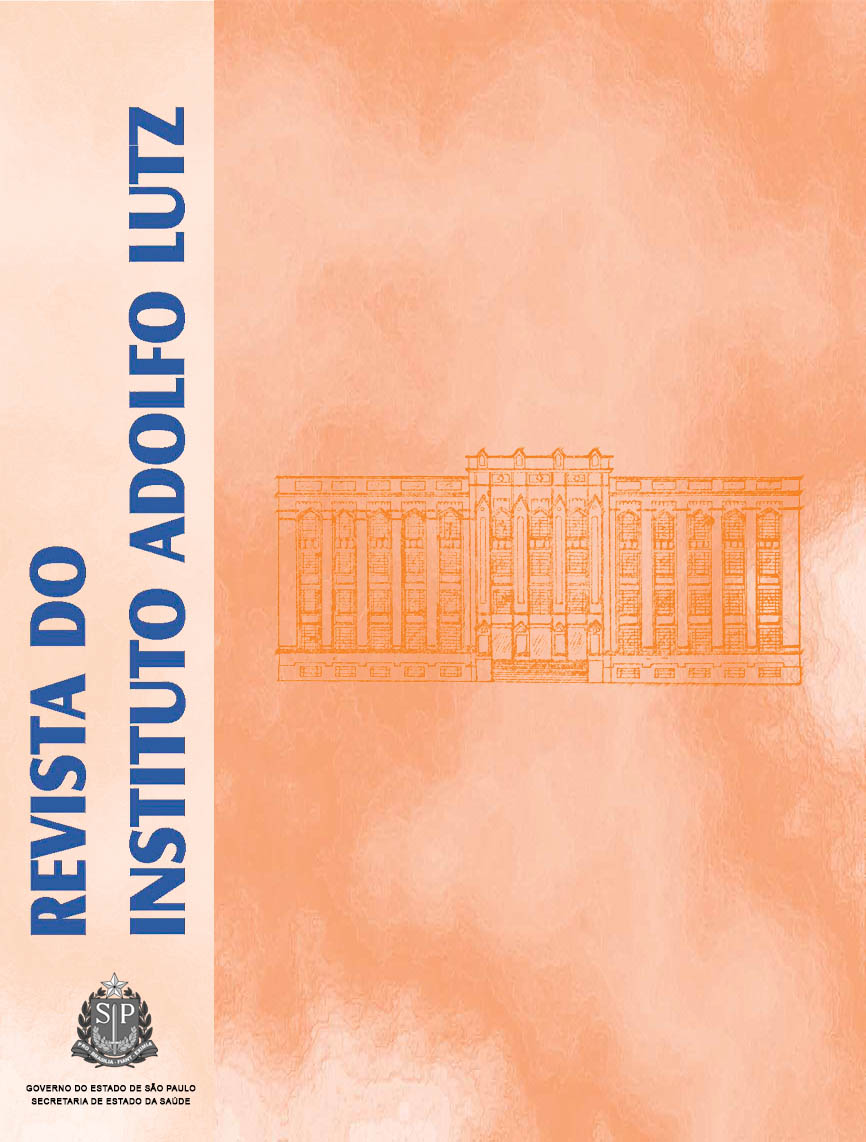Abstract
The influence of the plating medium used for the recovery of survivors, on the D-values for L. monocytogenes, in formulations for beef hamburger was investigated: 10% fat (F1), 20% fat (F2), 10% fat and 1.5% sodium chloride (F3) and 10% fat and 10.5% hydrated texturized soy protein (F4) were prepared and inoculated with a mixture of five strains of L. monocytogenes. Using tryptose phosphate agar containing 1% sodium pyruvate (TPAP) D-values (min) ranged from 36.11 (F1) to 62.76 (F3) at 55.0°C, from 2.55 (F2) to 4.32 (F3) at 60.0°C and from 0.34 (F1 e F2) to 0.52 (F3) at 65.0°C. The D-values, using lithium chloride phenylethanol moxalactam medium (LPM) for enumeration, ranged from 23.05 (F1) to 38.54 (F3) at 55.0°C; from 1.81 (F2) to 3.06 (F3) at 60.0°C and from 0.25 (F2) to 0.37 (F3) at 65.0°C. The z-values (°C), using the TPAP recovery data, ranged from 4.81 (F3) to 4.95 (F4) and from 4.95 (F3) to 5.21 (F4) using the LPM recovery data. The authors concluded that the heat resistance of L. monocytogenes in formulations for beef hamburger can be underestimated when LPM is used as the recovery medium.References
1. Ryser ET, Marth EH, Editors. Listeria, Listeriosis and Food Safety.2nd ed., New York: Marcel Dekker, Inc.; 1999, p. 131-224.
2. Mossel DAA. Listeria monocytogenes in foods. Isolation, characterization and control. Int J Food Microbiol. 1989; 8 (3): 183-95.
3. Warburton DW, Farber JM, Powell C, Tiwari NP, Read S, Plante R,Babiuk T, Laffey P, Kauri T, Mayers P, Champagne MJ, Hunt T,Lacasse P, Viet K, Smando R, Coates F. Comparison of methods foroptimum detection of stressed and low levels of Listeria monocytogenes. Food Microbiol. 1992; 9 (2): 127-45.
4. Buchanan RL, Smith JL, Stahl HG, Archer DL. Listeria methodsdevelopment research at the eastern regional research center, U.S.Department of Agriculture. J Assoc Official Anal Chem. 1988; 71(3):651-4.
5. Yu LSL, Fung DYC. Evaluation of FDA and USDA procedures forenumerating Listeria monocytogenes in ground beef. Food Microbiol.1991; 8 (1): 69-74.
6. Golden DA, Beuchat LR, Brackett RE. Inactivation and injury of Listeria monocytogenes as affected by heating and freezing. FoodMicrobiol. 1988; 5 (1): 17-23.
7. Linton RH, Pierson MD, Bishop JR. Increase in heat resistance of Listeria monocytogenes Scott A by subletal heat shock. J Food Prot.1990; 53 (11): 924-7.
8. Linton RH, Webster JB, Pierson MD, Bishop JR, Hackney CR. Theeffect of sublethal heat shock and growth atmosphere on the heatresistance of Listeria monocytogenes Scott A. J Food Prot. 1992; 55(2): 84-7.
9. Jorgensen F, Stephens PJ, Knochel S. The effect of osmotic shockand subsequent adaptation on the thermotolerance and cellmorphology of Listeria monocytogenes. J Appl Bacteriol. 1995; 79(3): 274-81.
10. Pagán R, Condón S, Sala FJ. Effects of several factors on the heat-shock-induced themotolerance of Listeria monocytogenes. Appl Environ Microbiol. 1997; 63 (8): 3225-32.
11. Quintavalla S, Campanini M. Effect of rising temperature on the heatresistance of Listeria monocytogenes in meat emulsion. Lett Appl Microbiol. 1991; 12 (5): 184-7.
12. Schoeni JL, Brunner K, Doyle MP. Rates of thermal inactivation ofListeria monocytogenes in beef and fermented beaker sausage. J FoodProt. 1991; 54 (5): 334-7.
13. Association of Official Analytical Chemists (AOAC). Official methods of analysis of the Association of Official Analytical Chemists. 14th ed.1984. 1141p.
14. Bligh EG, Dyer WJ. A rapid method of total lipid extraction andpurification. Can J Biochem Physiol. 1959; 37: 911-7.
15. Sebranek JG. Meat science and processing, Paladin House Publishers, Geneva, 1978.
16. Morton RD. Aerobic Plate Count. In: Downes FP, Ito K, editors.Compendium of Methods for the Microbiological Examination of Foods, 4th ed. Washington: Ed APHA; 2001, p.63-8.
17. Ryser ET, Donnelly CW. Listeria. In: Downes FP, Ito K, editors.Compendium of Methods for the Microbiological Examination ofFoods, 4th ed. Washington: Ed APHA; 2001, p.343-56.
18. Warburton DW, Farber JM, Babiuk T. Isolation of Listeria monocytogenes from all food and environmental samples. In: Canada Health and Welfare. Compendiumof analytical methods: laboratory procedures of microbiological analysis of foods. Polyscience; 1991,v.3[MFHPB 30]
19. Lovett J, Hitchins AD. Listeria isolation. In: Food and Drug Administration. Bacteriological Analytical Manual. 6th ed. (Suppl) 2ndprinting (2/89). Association of Official Analytical Chemists, 1989,Chap. 29, p.29.01-29.14.
20. Stumbo CR. Thermobacteriology in Food Processing. 2nd ed. AcademicPress; 1973. 329p.
21. Patashnik M. A simplified procedure for thermal process evaluation. Food Technol. 1953; 7(1): 1-6.
22. Fain ARJr, Line JE, Moran Ab, Martin LM, Lechowich RV, Carosella JM, Brown WL. Lethality of heat to Listeria monocytogenes Scott A:D-value e z-value determinations in ground beef and turkey. J FoodProt. 1991; 54(10): 756-61.
23. Smith JL, DL. Archer. Heat-induced injury in Listeria monocytogenes. J Ind Microbiol. 1988; 3: 105–10.
24. Busch SV, Donnelly CW. Development of a repair-enrichment brothfor resuscitation of heat-injured Listeria monocytogenes and Listeriainnocua. Appl Environ Microbiol. 1992; 58(1): 14-20.
25. Harrison MA, Huang YW. Thermal death times for Listeria monocytogenes (Scott A) in crabmeat. J Food Prot. 1990; 53 (10):878-80.
26. Clavero MRS, Beuchat LR, Doyle MP. Thermal inactivation of Escherichia coli O157:H7 isolated from ground beef and bovine feces, and suitability of media for enumeration. J Food Prot. 1998; 61 (3):285-9.
27. Craven SE, Blakenship LC. Increased heat resistance of salmonellaein beef with added soy proteins. J Food Prot. 1983; 46 (5): 380-4.
28. Doherty AM, McMahon CMM, Sheridan JJ. Thermal resistance of Yersinia enterocolitica and Listeria monocytogenes in meat and potatosubstrates. J Food Safety. 1998; 18 (2): 69-83.
29. El-Shenawy MA, Yousef AE, Marth EH. Thermal inactivated injuryof Listeria monocytogenes in reconstituted nonfat dry milk. Milchwiss.1989; 44 (12): 741-5.
30. Ollinger-Snyder P, El-Gazzar F, Matthews ME, Marth EH, Unklesbay N. Thermal destruction of Listeria monocytogenes in ground porkprepared with and without soy hulls. J Food Prot. 1995; 58 (5):573-6.

This work is licensed under a Creative Commons Attribution 4.0 International License.
Copyright (c) 2008 Instituto Adolfo Lutz Journal
